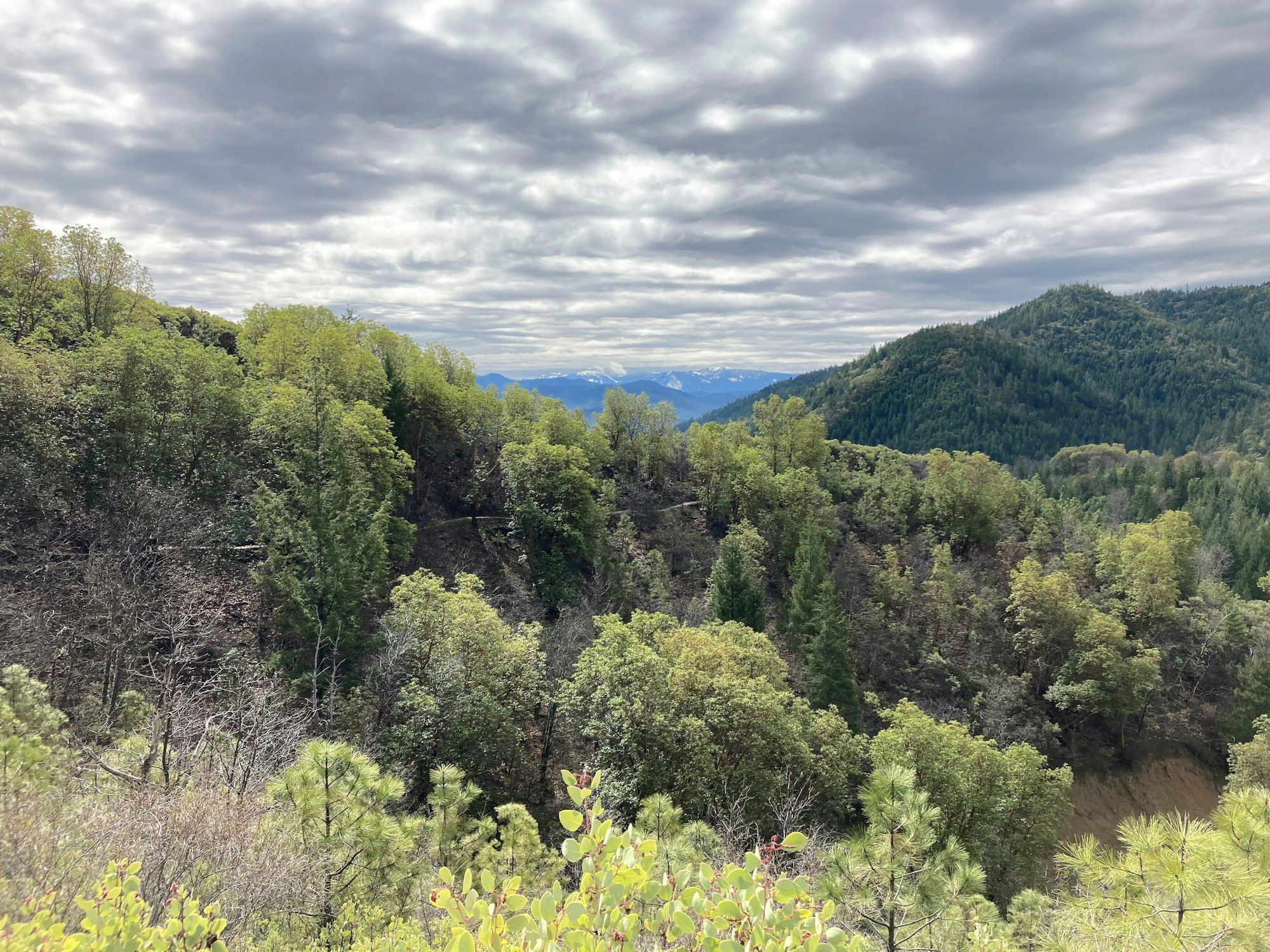Forests

Our Forests
The Klamath-Siskiyou Bioregion, of which Jackson County is a part, is known for its incredible biodiversity, including in forest types. Jackson County is home to oak woodlands, mixed conifer forests, higher elevation conifer forests, and riparian forests. These forests provide a host of benefits to the county: timber, recreation, water filtration, carbon storage, and wildlife habitat just to name a few.
Challenges to Forest Health
However, there are many challenges facing our forests. Much of the Rogue Valley is a fire-adapted ecosystem, which means that historically the environment experienced low-intensity, periodic fires. However, forest management over the last 100 years has favored fire suppression, in place of frequent, low-intensity burns. Fire exclusion has resulted in overcrowded and dense forests. These forests are significantly more-susceptible to extreme wildfire and more unhealthy overall. Fire exclusion has also led to conifer encroachment that threatens oak woodlands.
Changing climatic conditions also threaten overall tree health and viability, as do a variety of insects and diseases; while insect and disease impacts are a natural part of a forest ecosystem, climatic changes, fire exclusion, and the spread of nonnative insects and diseases have increased their impacts on our forests.
Forest Restoration and Management Tools
Our forests are in need of restoration and ongoing management to increase their health and resiliency to current and future stressors. Practices such as thinning and sustainable harvest, prescribed fire, removal of invasive species, and restoration of native species are critical for restoring forest health. This work is needed in forests recovering from some of the large, destructive fires we've had and in forests that haven't yet faced this challenge. In some areas, restoration may also mean a transition of forest type from conifer to oaks and other species as shifting climatic conditions may no longer allow the former forest composition to flourish.
In addition to restoration, individuals can support healthy forests by helping prevent negative impacts to them. For instance, individuals can help prevent the spread of forest pests by limiting movement of firewood (less than 30 miles from where cut or bought). Individuals can also follow safe habits to avoid igniting wildfires and creating defensible space around their homes to help slow their spread; visit our all about fire page to learn more.



.jpg?ixlib=rb-1.1.0&or=0&w=720&h=720&fit=fill&fill=blur&auto=format%2Ccompress&s=3e2401335506191269ab2347582bc860)

